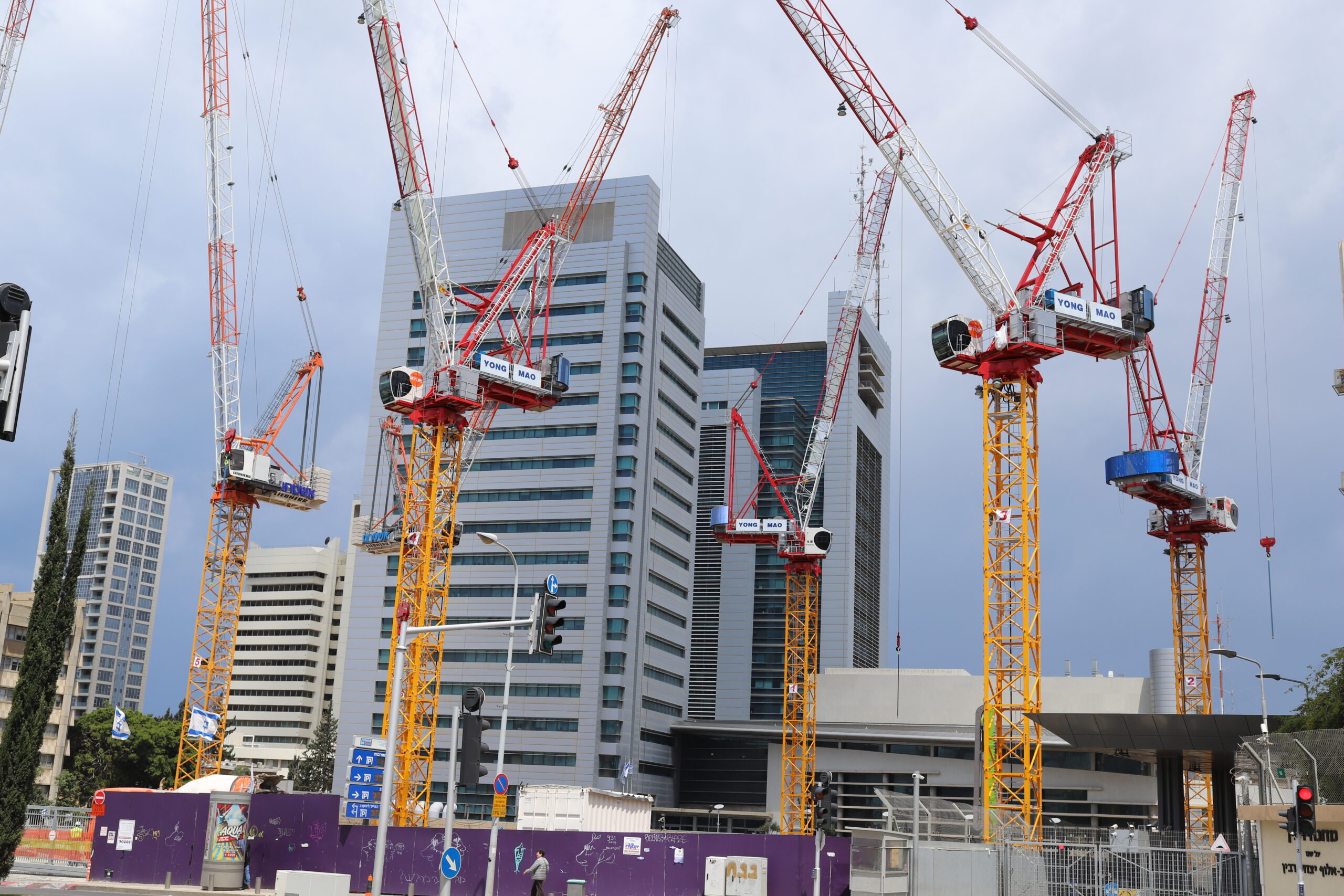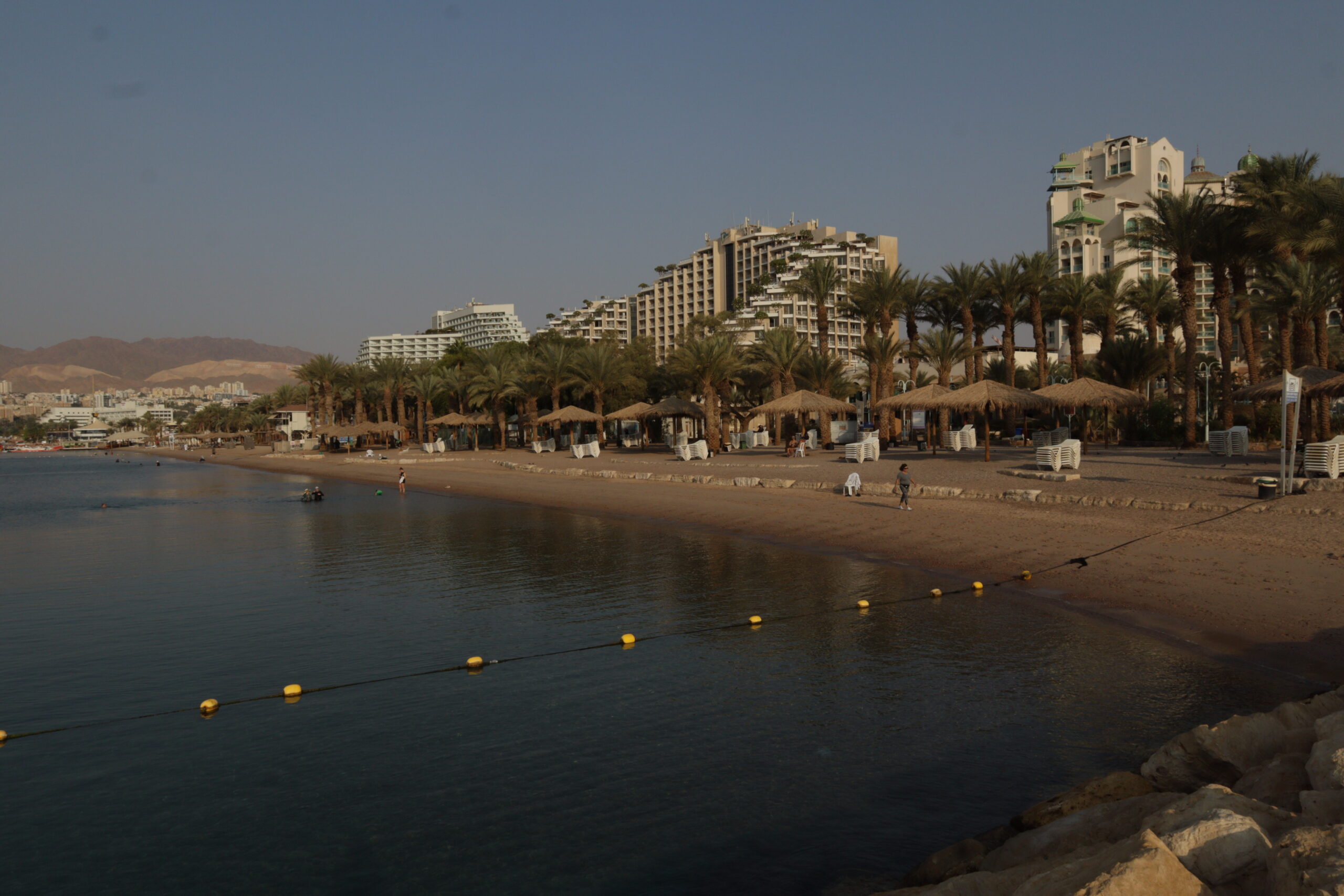Across Israel’s map, there’s a quiet imbalance that has become impossible to ignore. Tel Aviv hums with constant reinvention—tower cranes carving new lines into its skyline, startups spilling out of co-working spaces, new tram lines and bike paths threading through the chaos. But once you leave that coastal corridor of ambition, it feels as though the rest of the country has forgotten how to grow. Cities that once symbolized progress—Haifa, Eilat, Jerusalem—now seem locked in slow motion, orbiting around outdated models that no longer work. The contrast is jarring: a single metropolis speeding into the future while the rest of the urban fabric idles in neutral.

Tel Aviv
Haifa is a city quietly fading into its own reflection. Once proud and industrious, it now feels drained of forward motion, aging in place while younger generations slip away toward Tel Aviv’s orbit. The demographics tell the story more clearly than any skyline ever could—Haifa is getting older, not wiser. The streets still have charm, with their steep curves and panoramic views over the bay, but beneath that beauty lies a growing emptiness. Jobs are scarce outside of public sector institutions and hospitals; private enterprise is limited, and even service industries operate at half pulse. The talented, ambitious, and restless don’t linger—they graduate and leave, often within months, chasing the energy and opportunity of the center. What remains is a city full of retirees, mid-career professionals marking time, and an urban rhythm that feels more like maintenance than momentum.
At the heart of this stagnation sits the Technion, long mythologized as Israel’s “MIT.” In reality, it has become an academic island, insulated from the country’s startup revolution rather than fueling it. The campus feels detached, bureaucratic, and strangely proud of its irrelevance to the entrepreneurial ecosystem that thrives just an hour south. There’s no tangible bridge between its research output and commercial innovation—no dense, buzzing network of accelerators, venture capital, and cross-pollination that defines places like Herzliya or Tel Aviv. What should have been the intellectual engine of northern Israel has settled instead into a kind of technocratic inertia, content with producing papers rather than products, credentials rather than companies.
The tragedy of Haifa isn’t decline—it’s drift. Nothing catastrophic happens, nothing burns or breaks. The city simply loses its young, its creative spark, its sense of becoming. Urban renewal projects appear on PowerPoint slides and then fade; local leadership talks of “revitalization” as though saying it enough times might make it real. Yet without a new economic foundation, without incentives to keep talent anchored, and without an academic institution willing to open its gates to the real world, Haifa remains what it has quietly become: a city in slow retreat, growing older each year, proud of its past and paralyzed by it.
Further south, Eilat exposes an even deeper flaw in Israel’s development logic. The city was built on a single premise: tourism. Everything from its layout to its labor market, its infrastructure, even its branding, was designed to sustain that one function. And yet, the tourism that Eilat was built for—foreign, sun-seeking, long-stay leisure—vanished long before the latest war in Gaza. The reasons are painfully structural. Eilat is expensive, hard to reach, and offers little differentiation compared to cheaper, better-connected Mediterranean resorts. There’s still no railway line connecting it to the rest of the country, no nearby industrial base, no serious educational or cultural infrastructure. The Red Sea itself—once its natural advantage—has become a narrow, politically fraught corridor, now choked by Houthi disruptions that block trade and dampen the region’s sense of safety.

Eilat, a city on autopilot
What remains is a city on autopilot. Corporate retreats and government conferences fill the hotels occasionally, but they are transient guests, not foundations for a living economy. The once-bustling promenades are immaculate but half-empty; shops open and close like clockwork around brief peaks of domestic travel. Even the city’s energy feels borrowed—glossy resorts masking the absence of genuine vitality. It’s hard to shake the feeling that Eilat was designed for a kind of tourism that no longer exists, and in clinging to that outdated premise, it has trapped itself in a cycle of stagnation. Without diversification, infrastructure, or an honest rethinking of its purpose, the southernmost city has become a mirage of prosperity shimmering above an economic void.
Jerusalem presents a different, almost paradoxical kind of stagnation—the paralysis of complexity. Layered with religion, politics, and conflicting national narratives, it’s a city where every building project seems to require a theological argument. Expansion happens, but in fragments: new ultra-Orthodox neighborhoods here, luxury developments there, separated by invisible borders that make the city feel like a patchwork quilt of conflicting visions. The innovation ecosystem is stunted not for lack of talent but for lack of cohesion. The city’s deep cultural gravity pulls people in, yet its bureaucratic friction and socio-political divides push them away just as fast. The result is a capital that feels both ancient and gridlocked—rich in history, poor in momentum.

Jerusalem’s Unmovable Ladder
There’s something almost eerie about how this scene captures Jerusalem’s condition—a city so heavy with history that even a simple wooden ladder becomes a metaphor for everything that refuses to change. In the image, the façade of the Church of the Holy Sepulchre rises in that familiar honey-colored stone, its arches softened by centuries of sun and friction, its tower patched by endless restorations yet still carrying that stoic, slightly weary presence. And then, just above one of the arched windows, the ladder sits exactly where it always is: small, ordinary, and completely immovable, as if time itself declared it too complicated to touch. It’s absurd and weirdly poetic; I found myself staring at it longer than I expected, thinking about how only Jerusalem could produce a standoff over a piece of wood.
The ladder—the so-called *Status Quo ladder*—has been there for generations, locked in place by a centuries-old arrangement between rival Christian denominations who cannot agree on who has the right to move it. And honestly, the longer you look at it, the more it starts to feel like the city’s unofficial emblem. Jerusalem isn’t just layered; it’s paralyzed by those layers. Every stone carries a jurisdiction, every window a claimant, every square meter a century of arguments. The ladder stays put not because it matters, but because everything matters here, too much and not enough at the same time. It’s a kind of urban stalemate disguised as holiness, a physical reminder that the city moves only in increments so tiny you often don’t feel them at all.
Standing there, watching the light bounce off those serrated Romanesque arches, I couldn’t help but sense how the city breathes mostly through memory, not aspiration. You see the scaffolding on the tower. You see the patched walls. And yet nothing fundamental changes. Even the weeds growing between the blocks seem like long-term tenants. The whole Old City feels like that—magnificent, dense, emotionally overwhelming—but also locked in a timeless loop where the present is just a thin film stretched over an unyielding past. People leave, new generations seek opportunity elsewhere, and Jerusalem remains this beautiful, impossible place that refuses to reinvent itself.
The ladder is such a tiny thing, but in Jerusalem it’s never just about the ladder. It’s about a system where compromise feels dangerous, where cooperation dissolves into ritualized stalemate, and where the weight of sacred history crushes any attempt at straightforward modernization. It’s funny how a piece of wood no bigger than a bookshelf can sum up an entire city’s mood: suspended between worlds, fiercely guarded by tradition, and destined to stay exactly where it is because moving forward would require agreements that Jerusalem, for now, simply cannot make.
Across these examples, a broader pattern emerges: Israel’s cities outside Tel Aviv lack sustainable development models. They rely either on legacy industries, single-purpose economies, or ideological narratives that no longer align with reality. The problem isn’t just economic—it’s conceptual. Urban planning often follows outdated formulas, municipal governance is reactive rather than visionary, and national development policies tend to concentrate around the already-successful center instead of lifting the periphery. The irony is sharp: the country that built a global reputation for innovation, agility, and disruptive thinking in technology hasn’t managed to apply those same principles to its own urban fabric.
And beneath it all lies a distinctly Israeli generational tension. The old guard that still dominates national planning, municipal hierarchies, and state-backed institutions grew up with a worldview shaped by centralized ministries, government committees, and the prestige of bureaucratic expertise. Their playbook was written in the era of national companies, monopolies, and top-down masterplans—an Israel where development meant approval stamps, not imagination. But that mindset is slipping out of step with the country’s realities. Younger generations, raised in a world of startups, decentralization, open networks, and fluid careers, simply don’t recognize those rigid frameworks as relevant anymore. The tools that once defined authority—commissions, tenders, state corporations—feel slow and strangely ceremonial next to the speed and adaptability younger Israelis expect.
Eilat may be the most visible warning, but it’s not alone. Haifa, Jerusalem, Be’er Sheva—each reveals a different symptom of the same illness: cities without renewal engines, economies without adaptability, identities built on past models. Meanwhile, Tel Aviv surges ahead, proof that reinvention is possible when momentum becomes part of the culture. The question is whether the rest of the country will find a way to catch up—or whether Israel will remain a nation defined by one city that moves and many that stand still.